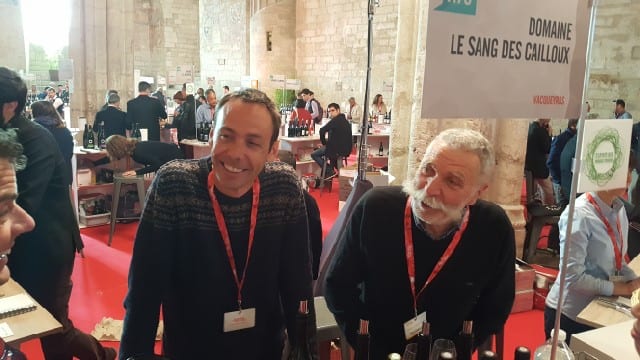
28 Aug Grenache Stands Out
This story originally appeared in the Napa Valley Register.
Some regions in the world are known for single varietal wines, such as pinot noir and chardonnay in Burgundy, nebbiolo in Barolo and tempranillo in Ribera del Duero. In other regions, such as in Bordeaux, Riojo and the Southern Rhone, they are known for their blends.
I am not here to say that one is better than the other. A single varietal wine can truly express the terroir it comes from. On the other hand, a well-crafted blend will balance the different characteristics of each grape to enhance aromas, color, texture, body or finish of a wine.
The Rhône Valley in France is one of the regions known for its blends. In the Southern Rhône, grenache is the dominant variety but traditionally it is blended with syrah, cinsault and mouvedre. Blending is one of the required rules in Côtes du Rhône and other appellations in Southern Rhone.
Therefore, I was all the more surprised when tasting wines at Découvertes en Vallée du Rhône, the Rhône Valley wine fair earlier this year, where I found more and more producers offering 100 percent grenache wines.
As I walked around speaking with winemakers, I asked them about the tradition of blending wines. I was told that blends allow for consistency in difficult years and that blends enable a balanced quality of different grapes. Others explained that blends of different grapes can increase acidity, which is needed for aging. But most importantly, it is tradition. It is how their fathers, grandfathers and great-grandfathers made the wine and is the “law of the region.”
But more and more, I would approach a wine table where they had 100 percent grenache wines, although it was not always labeled as such on the front of the bottle. Some of these wines were labeled Vin de Pays wines, some were given appellation labels.
— Domaine Le Sang des Cailloux
Winemaker Serge Férigoule introduced me to his Oumage 2014 and told me it was 100 percent grenache. He had made 1,500 bottles and had also made the wine 100 percent grenache in 2010 and 2014. When I asked why he was not making a blend, he said he is testing grenache to see if it has potential to age for a long time. He is curious to know what the grape will do over time.
— Domaine Notre Dame des Pallières
Le Pellegrin 2016 from Lirac is typically blended with 20 percent syrah. However, the grenache was so exceptional in 2016 that it was made as a single varietal wine.
— Chateau de Saint Cosme
Located in the heart of Gigondas, Chateau de Saint Cosme has been making single varietal grenache since 2003. Owner Louis Barruol explained that he does not blend because he does not want to lose the terroir of each of the three clos of grenache, each 90-110-year-old vines growing on limestone, clay, and sand.
— Domaine des Bosquets
Domaine des Bosquets produces two 100 percent grenache wines in Gigondas. According to the rules written 40 years ago, the wine must be a blend, it does not specify grapes, so they blend barrels of grenache. In 2009, they felt that each plot was strong enough to produce single varietal wines. But, fifth-generation winemaker Julien Brechet explained that it is important to be precise, to taste the wine and to not make mistakes. If the quality is not there, there is no hiding it.
— Les Halos de Jupiter
Famous consultant Phillipe Cambie is not following a traditional path with Les Halos de Jupiter. With a true passion for grenache, Cambie calls it “the king of all grapes and the natural leader of all Rhone varietals.” Working with plots with 100-year-old vines, his wines pay homage to his favorite grape while showcasing grenache in different lights.
— Bakke Vineyards
American winemaker Even Bakke has been living in the Rhone for 10 years. He joked that working with grenache was “the closest thing to pinot that I can afford.” But also, what he likes about grenache is its transparency. “It is the third or fourth most planted grape in the world but people do not know it. It is a great blender grape as it lays nicely with other grapes but alone it shows a sense of place.” Bakke makes a 100 percent wine from Pied Porcher, a single vineyard with 45-year-old vines.
— LePlan Vermeersch
Dirk Vermeersch, a Belgian-Flemish former race car driver, bought his property in 2000. As a new winemaker in the region, he wanted to do something different. As he explained, “I am Flemish and want to do it the opposite way” and as of 2016 is producing only single varietal wines, including grenache, as well as syrah and carignan.
These are just a sampling of the 100 percent grenache wines that I tasted and some of the thoughts the winemakers had behind the wines. I am not predicting the rules will change overnight in any region, but it is fun to see winemakers delve into specific grapes and see what the grapes can do on their own.
The conclusion I have drawn is that climate change, the age of the vines, technology and expertise are reasons that I believe we are seeing a region that has traditionally been exclusive to blends make singe varietal wines.
No longer are they doing things just because generations before have done it that way. We have a new generation of winemakers who have studied and traveled around the world. They have tasted wines from outside of their regions and are exposed to new ideas that they bring into to their wineries.
Read the original story in the Napa Valley Register.
Discover more from Please The Palate
Subscribe to get the latest posts sent to your email.





